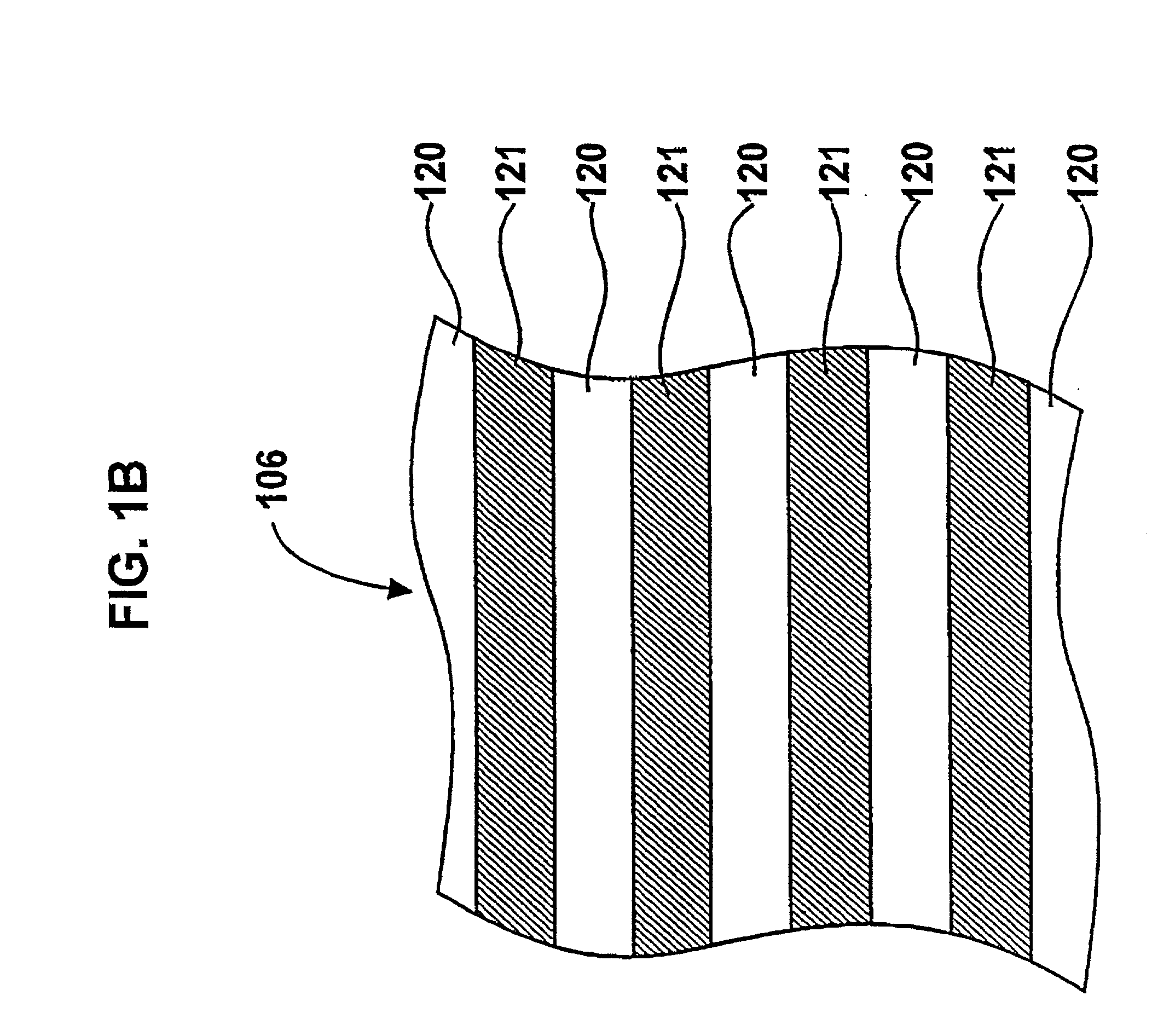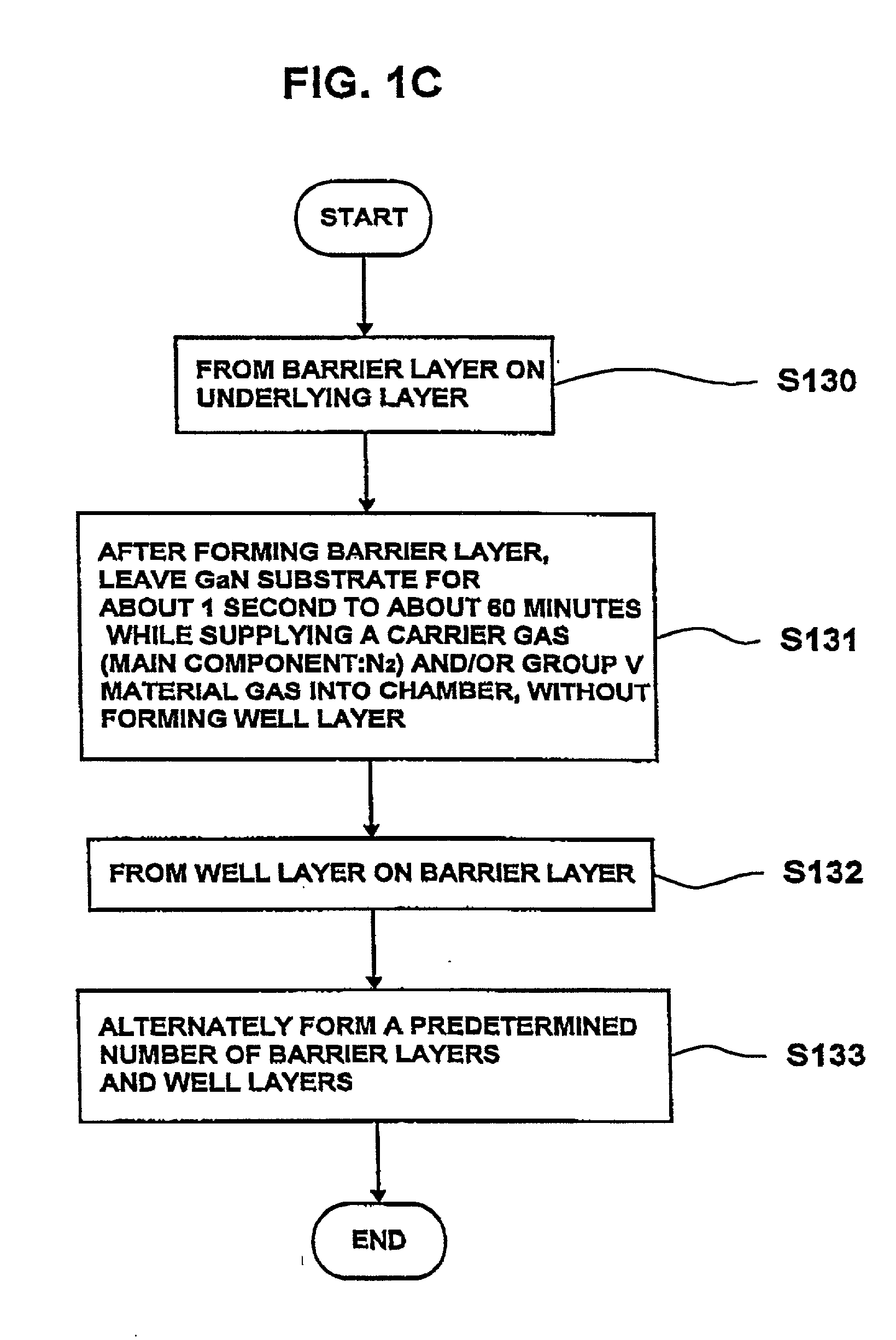Nitride compound semiconductor light emitting device and method for producing the same
a light-emitting device and compound semiconductor technology, which is applied in semiconductor devices, lasers, semiconductor lasers, etc., can solve the problems of high emission intensity, high nitrogen vacancy, and high defect concentration of nitride compound semiconductor crystals formed on conventional sapphire substrates
- Summary
- Abstract
- Description
- Claims
- Application Information
AI Technical Summary
Benefits of technology
Problems solved by technology
Method used
Image
Examples
example 3
[0083] (Example 3)
[0084] A semiconductor light emitting device 1000 was produced by a method similar to Example 2 while varying the thickness of the n-GaN layer 103, except that the growth temperature for the active layer 106 was fixed at about 750.degree. C. FIG. 10 shows results of a surface roughness plotting for the semiconductor light emitting device 1000 according to the present example with respect to the total thickness of the underlying layers between the substrate 101 and the active layer 106.
[0085] In FIG. 10, ".circle-solid." plots represent results obtained with a substrate tilt angle of 0.15.degree. in the direction from; ".largecircle." plots represent results obtained with a substrate tilt angle of 5.degree. in the direction; ".diamond-solid." plots represent results obtained with a substrate tilt angle of 1.7.degree. in the direction; and ".diamond." plots represent results obtained with a substrate tilt angle of 0.04.degree. in the direction. From FIG. 10, it c...
example 4
[0090] (Example 4)
[0091] In Example 4 of the present invention, a semiconductor light emitting device 1000 in the form of an LED is produced, using the above-described growth wait period technique on a slightly-tilted substrate 101. In the present example, the relationship between the emission intensity when a current is injected to the resultant LED and the waiting time observed after growing each barrier layer 120 in the active layer 106 will be discussed.
[0092] By using a GaN substrate having a mirror-polished (0001) plane whose crystal orientation is actually tilted away from the direction by 0.15.degree. in the direction, a nitride compound semiconductor multilayer structure it grown in the manner shown in Example 1.
[0093] Now, steps for producing the active layer 106 according to the present example of the invention will be described with reference to a flow chart shown in FIG. 1C. After an n-GaN layer 103 is formed, growth conditions for the active layer 106 are adjusted so...
example 5
[0104] (Example 5)
[0105] In Example 5 of the present invention, a semiconductor light emitting device 1000 in the form of an LED is produced, using the above-described growth wait period technique on a GaN substrate having a mirror-polished (0001) plane whose crystal orientation is actually tilted away from the direction by 0.15.degree. in the direction. According to the present example, a predetermined wait period is observed after growing each barrier layer 120 within an active layer 106, and a predetermined wait period is observed after growing each well layer 121 within an active layer 106. In the present example, the relationship between the emission intensity when a current is injected to the resultant LED and the waiting time observed after growing each well layer 121 in the active layer 106 will be discussed. Thus, according to the present example, the step of leaving the substrate 101 for a predetermined waiting time (step S131) in the flowchart shown in FIG. 1C is perfor...
PUM
 Login to View More
Login to View More Abstract
Description
Claims
Application Information
 Login to View More
Login to View More - R&D
- Intellectual Property
- Life Sciences
- Materials
- Tech Scout
- Unparalleled Data Quality
- Higher Quality Content
- 60% Fewer Hallucinations
Browse by: Latest US Patents, China's latest patents, Technical Efficacy Thesaurus, Application Domain, Technology Topic, Popular Technical Reports.
© 2025 PatSnap. All rights reserved.Legal|Privacy policy|Modern Slavery Act Transparency Statement|Sitemap|About US| Contact US: help@patsnap.com



